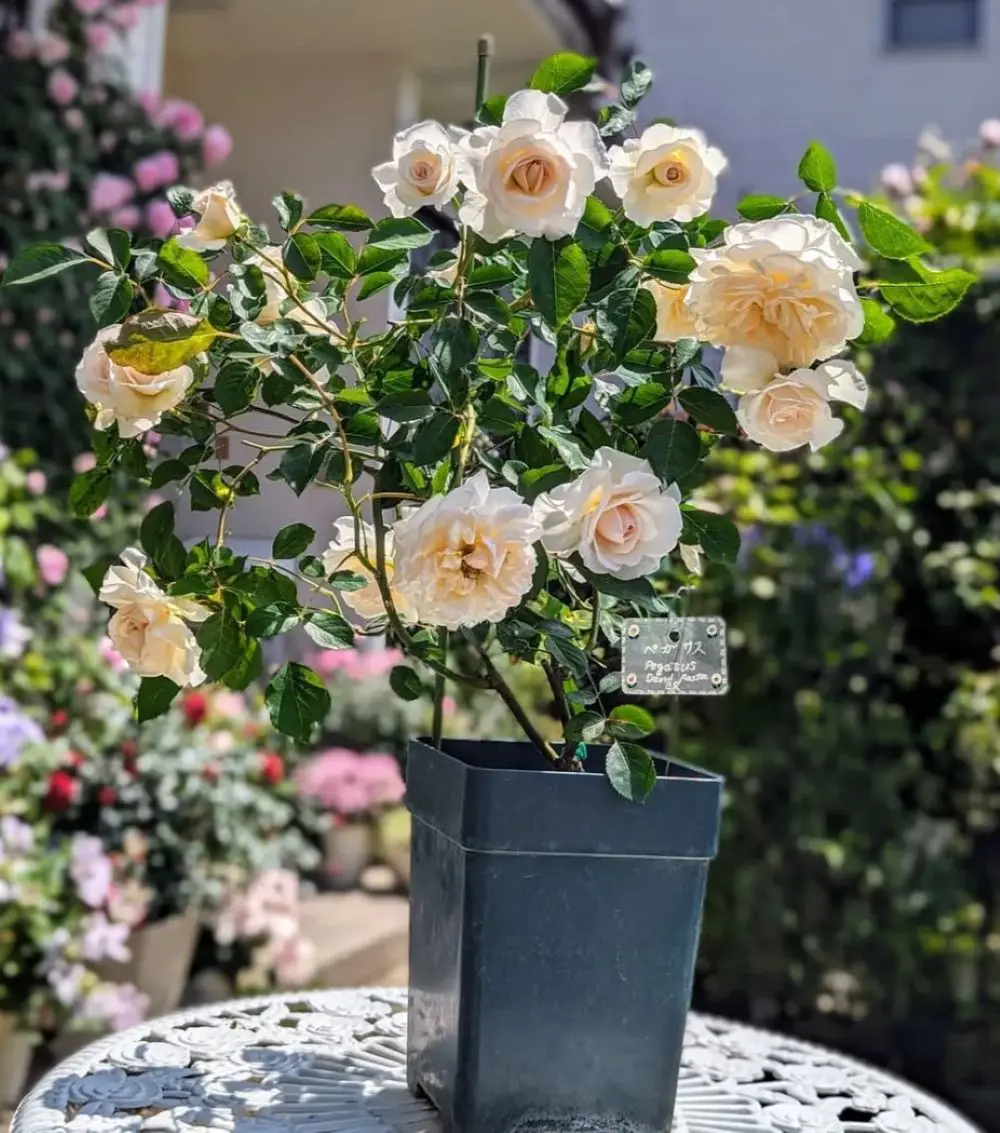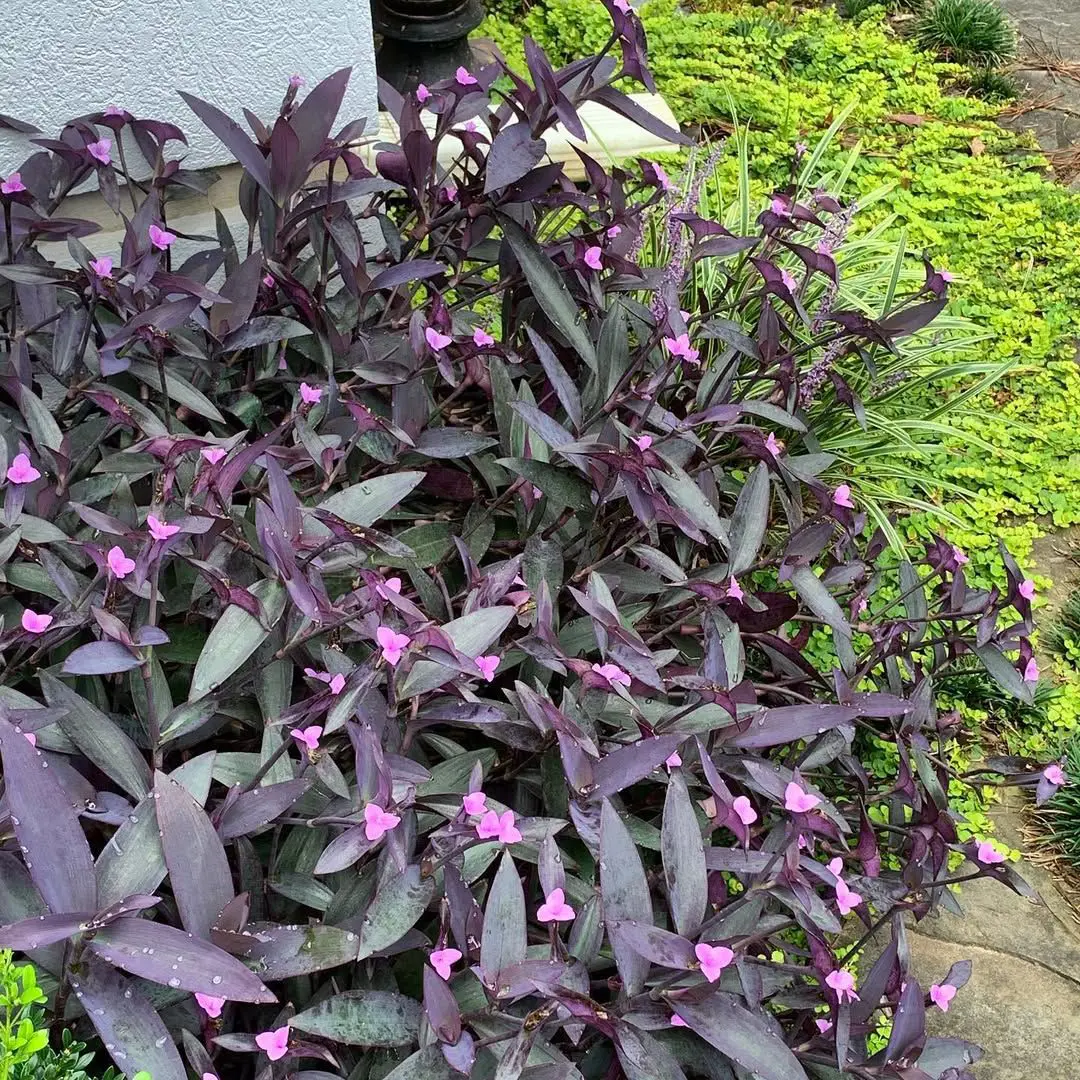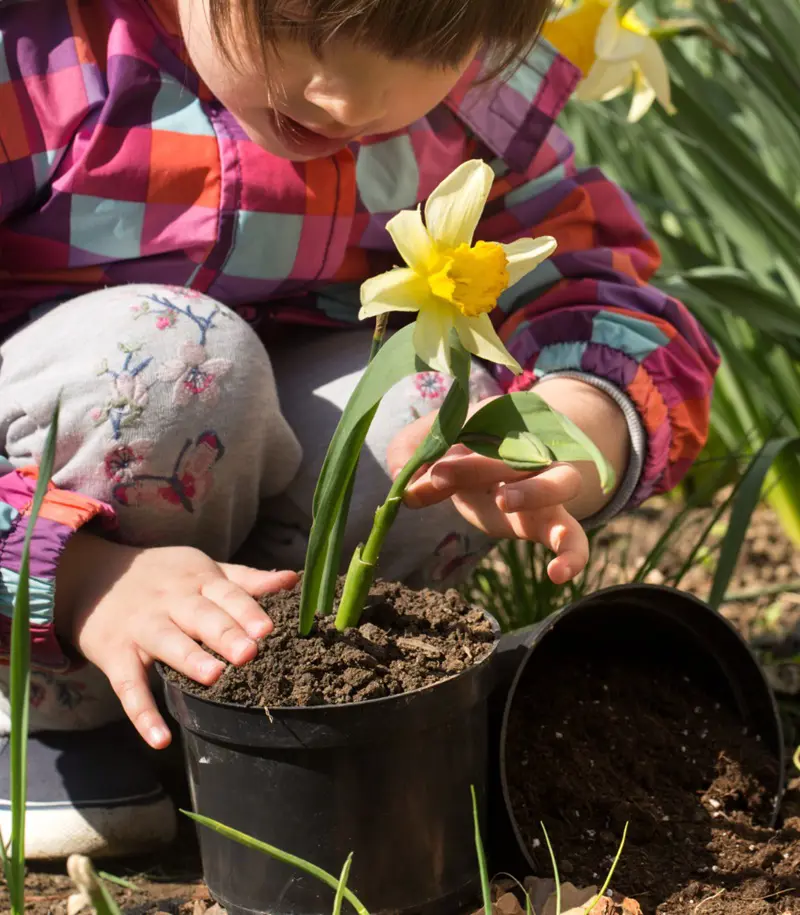Water lilies are one of the most enchanting aquatic plants that can transform any pond, water garden, or container into a serene oasis. Their large, glossy leaves and stunning flowers create a picturesque setting, attracting various wildlife and providing a calming ambiance.
Here we will cover everything you need to know about growing and caring for water lilies, from understanding the plant itself to planting and nurturing these beautiful aquatic blooms.
Water Lily Plant
Characteristics of Water Lilies
Water lilies are perennial aquatic plants known for their broad, floating leaves and vibrant flowers. They belong to the family Nymphaeaceae and can be found in temperate and tropical regions around the world. There are two main types of water lilies: hardy and tropical.
- Hardy Water Lilies: These are suitable for colder climates and can survive winter freezes. They usually bloom during the day and have flowers that sit on the water’s surface.
- Tropical Water Lilies: These thrive in warmer climates and have larger, more vibrant blooms. They come in both day-blooming and night-blooming varieties, with flowers that can rise above the water’s surface.
Anatomy of a Water Lily
- Leaves (Pads): Water lily leaves, also known as pads, are round and float on the water’s surface. They have a waxy coating to repel water and can vary in size.
- The flowers of water lilies are what make them truly spectacular. They come in various colors, including white, pink, yellow, and blue, and can be quite fragrant.
- Roots and Rhizomes: Water lilies have rhizomes, which are horizontal, underground stems that store nutrients and anchor the plant to the soil.
How to Plant Water Lily
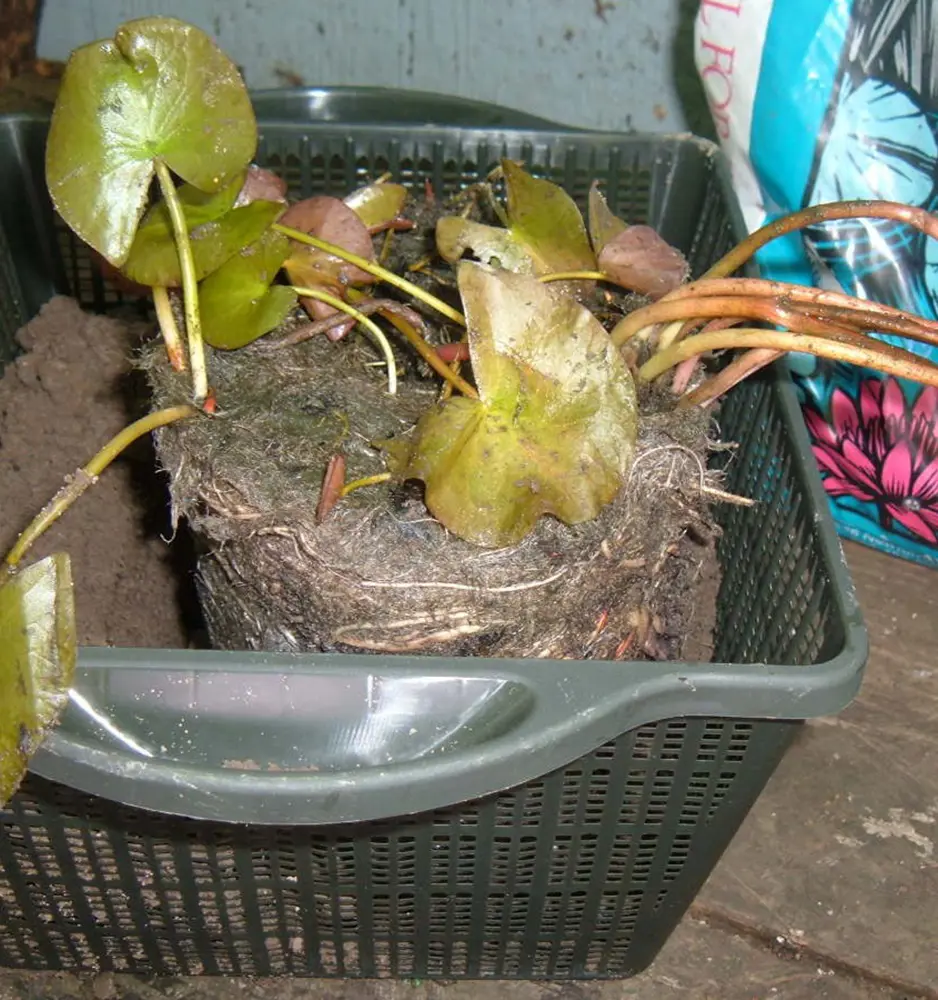
Selecting the Right Location
Water lilies need a sunny location with at least 4-6 hours of direct sunlight each day. They prefer calm, still water and can be planted in ponds, water gardens, or large containers.
Preparing the Planting Area
- Choose a Planting Container: Use a wide, shallow container, preferably without drainage holes, to prevent soil from escaping into the water.
- Add Soil: Fill the container with heavy clay garden soil or aquatic plant soil. Avoid using potting mix as it can float and cloud the water.
- Plant the Rhizome: Place the rhizome at a 45-degree angle in the soil, with the growing tip positioned towards the center of the container and the roots spread out.
- Cover with Gravel: Add a layer of gravel over the soil to keep it in place and prevent fish from disturbing the soil.
- Submerge the Container: Gently lower the container into the water, ensuring the top of the container is about 12-18 inches below the water surface for mature plants, and 6-12 inches for young plants.
Planting from Seeds
- Soak the Seeds: Place the water lily seeds in a bowl of warm water for 3-4 days, changing the water daily until the seeds start to sprout.
- Prepare a Seed Tray: Fill a seed tray with aquatic soil or a mix of sand and clay.
- Sow the Seeds: Gently press the sprouted seeds into the soil, just enough to anchor them.
- Cover with Gravel: Add a thin layer of gravel over the seeds.
- Submerge the Tray: Place the seed tray in shallow water with good sunlight. As the seedlings grow, gradually increase the water depth.
Growing Water Lilies
Water lilies (Nymphaea spp.) are iconic aquatic plants prized for their floating leaves and stunning blooms. Growing them successfully requires attention to specific conditions and regular maintenance to ensure their health and beauty.
Providing Optimal Conditions
Sunlight:
- Water lilies thrive in full sun. Ensure they receive at least 4-6 hours of direct sunlight daily to promote robust growth and abundant flowering. In hotter climates, some afternoon shade can be beneficial to prevent overheating.
Water Depth:
- Adjust water depth based on the type of water lily and its growth stage. Young plants should initially be placed in shallow water (6-12 inches deep) and gradually moved to deeper areas (up to 24-36 inches deep) as they mature. This gradual adjustment helps the plants acclimate and prevents shock.
Fertilizing:
- Use aquatic plant fertilizer tablets to provide essential nutrients during the growing season, typically from spring to early fall. Insert the tablets into the soil near the roots following the manufacturer’s guidelines to avoid over-fertilization, which can lead to algae problems. Fertilize tropical water lilies more frequently than hardy varieties.
Temperature:
- Tropical water lilies prefer warmer water temperatures ranging from 70-80°F (21-27°C). Hardy water lilies are more tolerant of cooler temperatures but still thrive in a range suitable for most garden ponds.
Maintenance and Care
Pruning:
- Regularly remove yellowed or damaged leaves and spent flowers to maintain plant health and water quality. This practice also enhances the aesthetic appeal of the water lily display.
Controlling Algae:
- Algae can be controlled by maintaining balanced nutrient levels. Avoid over-fertilizing and ensure adequate shade is provided by floating plants or strategically placed structures. Physical removal of excess algae and regular pond cleaning also help to manage algae growth.
Dividing Rhizomes:
- Every 2-3 years, divide water lily rhizomes to prevent overcrowding and rejuvenate plant vigor. Follow these steps:
- Lift the Plant: Carefully lift the water lily from the pond or container.
- Divide the Rhizome: Use a sharp knife to divide the rhizome into sections, ensuring each section has healthy roots and viable growth points (eyes).
- Replanting: Plant each division into a separate container or pond location using aquatic planting soil or a mix of loam and clay. Cover the rhizome with a thin layer of soil and gently press it down.
- Watering: Submerge the planted rhizome in water, adjusting the depth as recommended for the specific type of water lily.
- Maintenance: Resume regular care routines, including fertilizing and pruning as needed.
Water Lily Seeds
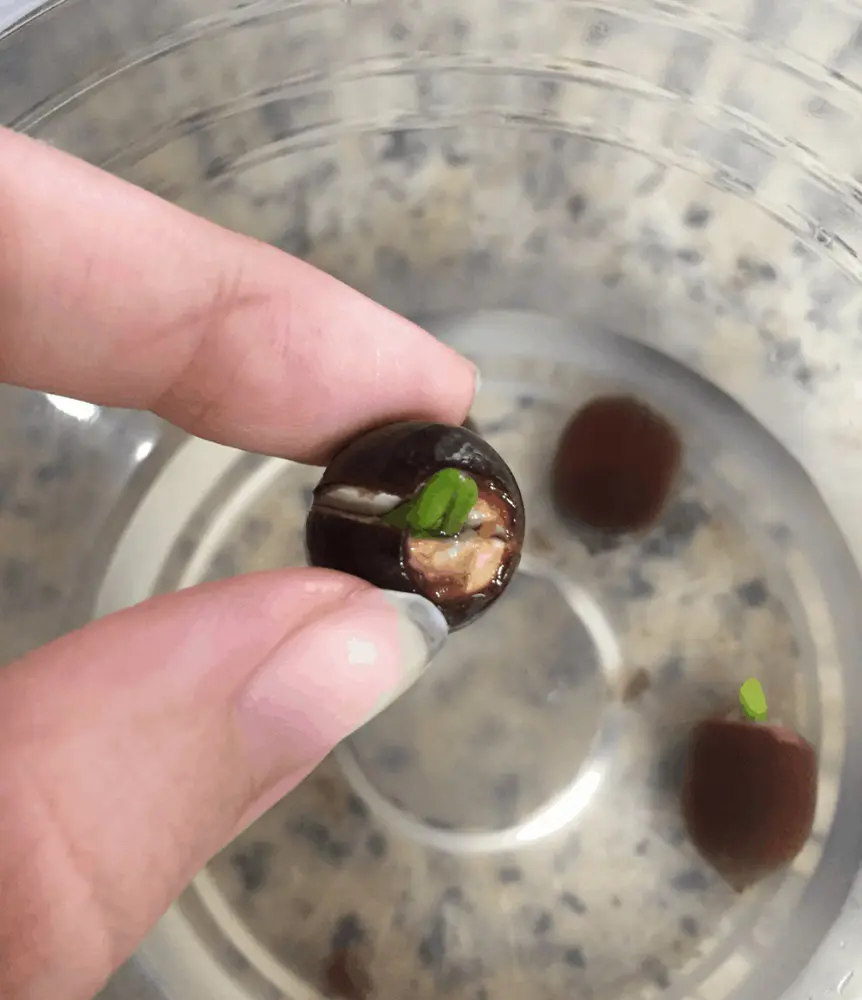
Collecting and Storing Seeds
- Collecting Seeds: After the flowers fade, they will form seed pods. Allow the pods to mature on the plant, then collect them once they start to turn brown and dry out.
- Drying Seeds: Place the collected pods in a warm, dry place until they split open, revealing the seeds.
- Storing Seeds: Store the seeds in a cool, dry place in an airtight container until you are ready to plant them.
Germinating Seeds
- Soak the Seeds: Soak the seeds in warm water for several days, changing the water daily, until they sprout.
- Planting: Follow the planting instructions for seeds, ensuring they have access to sunlight and proper water depth.
Common Pests and Problems of Water Lilies
Water lilies (Nymphaea spp.) are exquisite aquatic plants known for their floating leaves and vibrant blooms. While generally resilient, they can encounter several pests and diseases that require attention to maintain their health and beauty.
Pests
Aphids:
- Symptoms: Aphids are tiny, sap-sucking insects that can infest water lily leaves and flowers, causing them to deform and curl.
- Solution: Control aphids by spraying the affected plants with insecticidal soap or simply rinsing them off with a strong stream of water. Ensure to reach the undersides of leaves where aphids often hide. Repeat treatments as necessary to keep populations under control.
Water Lily Beetles:
- Symptoms: These beetles feed on water lily leaves, creating characteristic holes and damage.
- Solution: Handpick adult beetles and larvae off the plants and dispose of them. Alternatively, use an appropriate insecticide labeled for use on aquatic plants, following the manufacturer's instructions carefully to avoid harming beneficial aquatic life.
Diseases
Leaf Spot:
- Symptoms: Leaf spot manifests as brown or black spots on water lily leaves, often caused by fungal infections. These spots can enlarge and coalesce, leading to leaf yellowing and premature drop.
- Solution: Remove and destroy affected leaves promptly to prevent the spread of the fungus. Improve air circulation around the plants by thinning out crowded foliage and ensuring proper spacing. Fungicides labeled for aquatic plants can be used if the problem persists, following recommended application rates and timings.
Root Rot:
- Symptoms: Root rot is typically caused by fungal pathogens thriving in waterlogged soil conditions, leading to the decay of roots and the base of the plant.
- Solution: Prevent root rot by planting water lilies in well-draining aquatic soil or containers filled with loam or clay soil mixed with sand. Ensure pots have drainage holes to allow excess water to escape. Avoid overwatering and maintain proper water levels to prevent the roots from sitting in water for prolonged periods.
Prevention Tips
- Regular Inspection: Monitor water lilies regularly for signs of pests or diseases, especially during the growing season.
- Cultural Practices: Maintain a clean pond or water garden environment by removing dead foliage and debris, which can harbor pests and pathogens.
- Balanced Nutrition: Ensure water lilies receive appropriate nutrients to support healthy growth and natural defenses against pests and diseases.
Winterizing Water Lilies
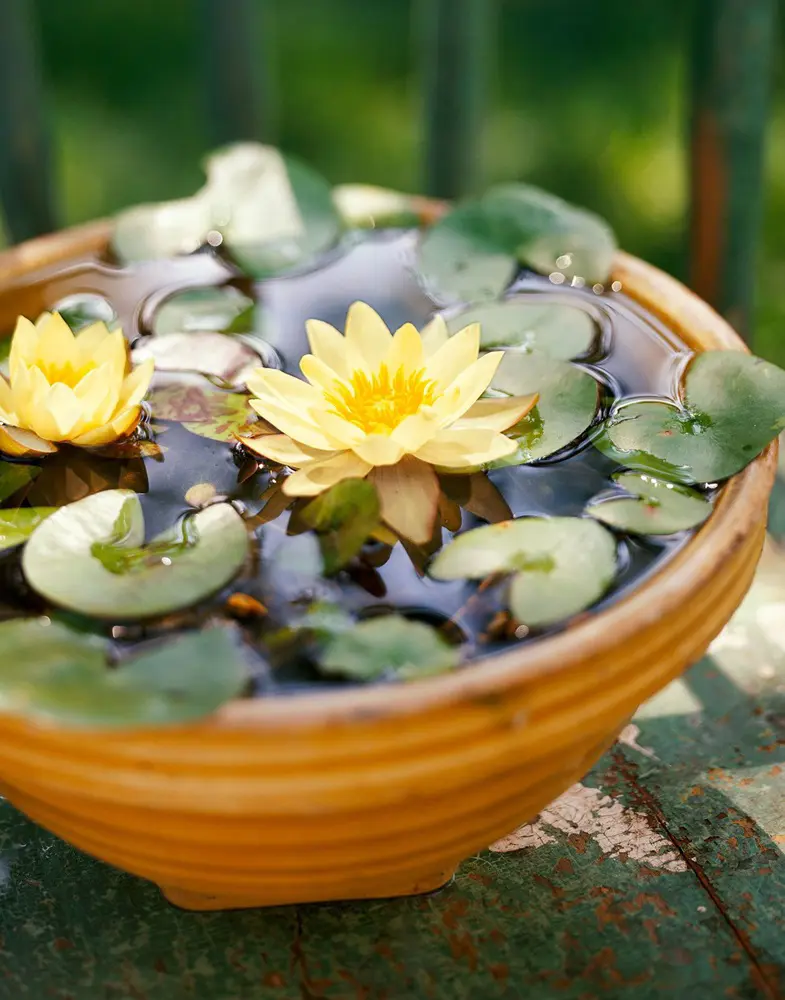
Hardy Water Lilies
- Outdoor Ponds: In regions with freezing winters, hardy water lilies can survive if they are planted deep enough to avoid ice formation. Trim back dead foliage and stop fertilizing in the fall.
- Containers: Move containers to a frost-free location or sink them deeper in the pond.
Tropical Water Lilies
- Indoor Storage: Tropical water lilies should be removed from the pond before the first frost. Trim back foliage, place the rhizomes in a container with damp sand, and store them in a cool, dark place.
- Greenhouse: Alternatively, tropical water lilies can be grown indoors in a greenhouse or aquarium during the winter months.
Water Lily Flower
The Beauty and Function of Water Lily Flowers
Water lily flowers are not only beautiful but also serve essential ecological functions. They provide habitat and food for various aquatic insects, birds, and amphibians. The flowers open and close in response to light, with some blooming during the day and others at night.
Blooming Season
- Hardy Water Lilies: Typically bloom from late spring to early fall.
- Tropical Water Lilies: Can bloom year-round in warm climates but are most prolific during the summer months.
Pollination
Water lily flowers are usually pollinated by insects, especially beetles. The flowers often have a strong fragrance and produce nectar to attract pollinators.


